Read Our Blogs
Slowing down to see the signs of spring
Nature, especially in spring, can fill us with happiness, joy, and a spark of renewal. Don't let distractions consume this spring break; take some time to explore the natural world found outside at Virginia State Parks.
From fishing trips to fun family picnics, spring reinvigorates us for many reasons. For some, it's being able to go outside and enjoy the warm weather or hiking a trail we haven't walked since last fall. For others, it's seeing a familiar bird, finding a reemerging wildflower, or spotting your first turtle. Head out on your favorite trail!
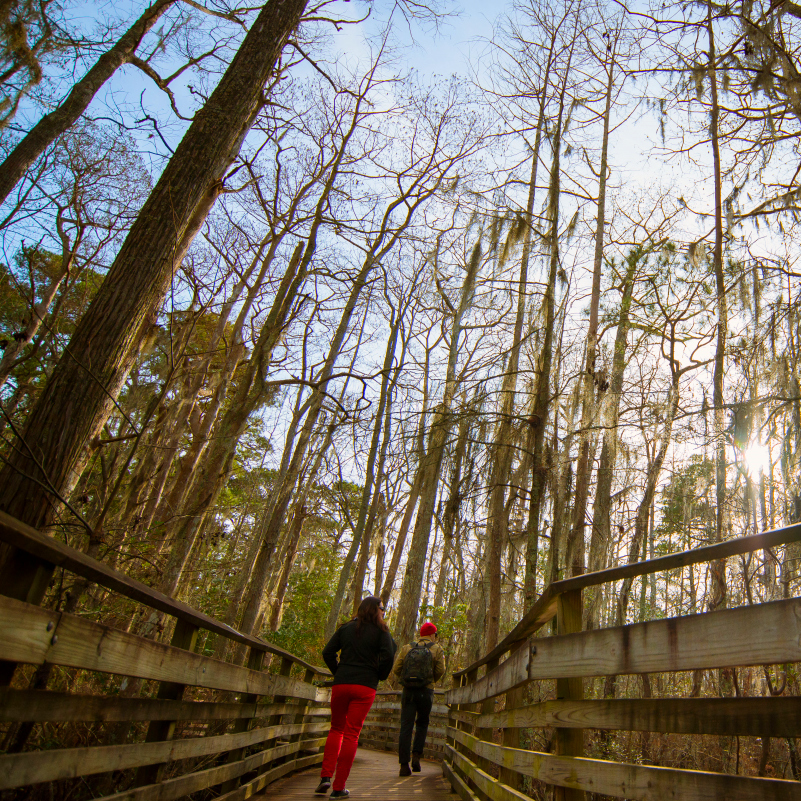
Spring break is a great time to explore a park with friends.
I love to hike on trails in spring and find a comfortable spot to sit and observe. Sometimes leaning against a tree with a good viewpoint, sometimes by a river or water source. After a couple of moments of thinking nothing is going on around you, nature happens!
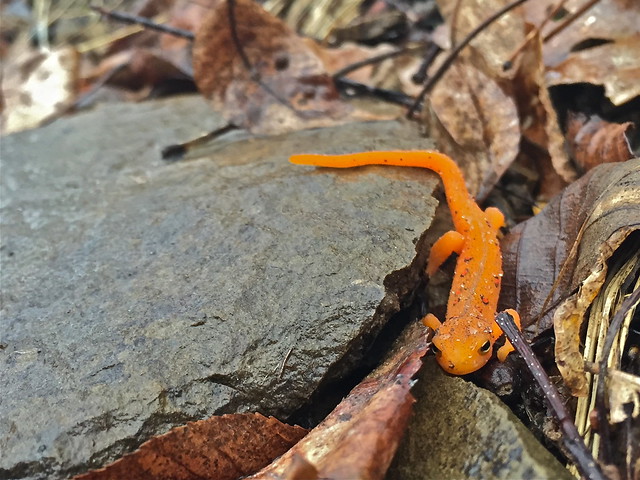
The first red eft sighting of spring always excites me.
Once we stop and sit, we begin to blend in with our environment more. Soon the birds start singing again. These songs communicate beyond the birds, like security systems telling other animals the surroundings are safe. Critters begin to emerge, and you never know what you'll see. Sometimes the hardest part is taking a break and practicing patience. Animals are hyper-aware of their environment (their survival depends on it). Sticks breaking, loud talking, or even just walking is enough to make many animals run for cover and hide until they believe the coast is clear again.
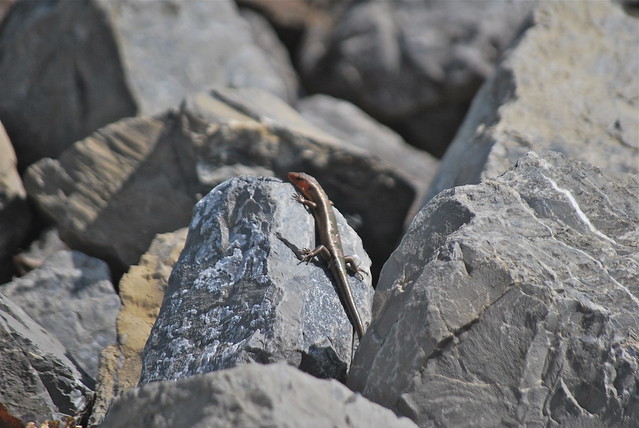
A broad-headed skink suns itself on a warm rock.
I practiced the art of disappearing into my environment at several Smith Mountain Lake State Park locations and had some great results. Depending on the weather, time of day and year, happenstance, and serendipity, you never know what you'll see - that's part of the fun!

Flowering dogwoods along trails mark the beginning of spring.
Success in wildlife viewing always varies, and you get better at figuring out prime habitat locations along edges of forest and field, next to the water or food sources. Sometimes you see little, sometimes so much, but I always learn something, typically see cool creatures, and come away refreshed and in better spirits after spending time outdoors. It's always helpful to keep an open mind without too much expectation, that way, whatever happens, is a pleasant surprise, and at worst, you get some much-needed serenity in nature.
Binoculars help in this endeavor tremendously because we often only see wildlife from a distance.
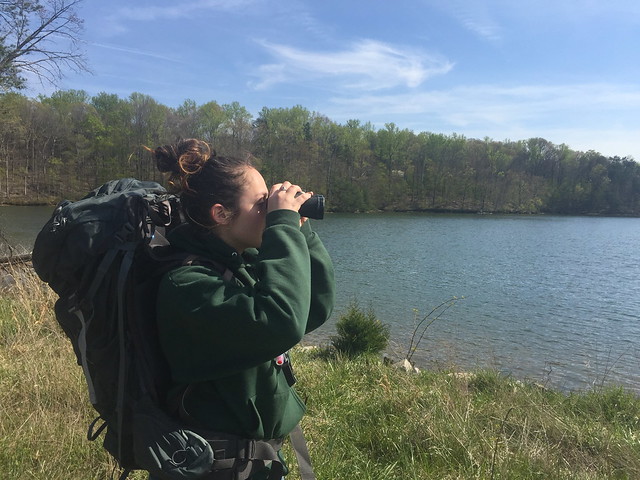
Find some birds, bring your binoculars for a better view.
Birding is a popular recreational activity at Virginia State Parks, which has many great opportunities for wildlife viewing within a wide range of habitats.
Sometimes you don't even have to go far. I heard and saw a pair of huge pileated woodpeckers forage and interact from the deck of my cabin. Anyone who's hiked in Virginia woods has undoubtedly heard this bird in the distance, either drumming or seeming to laugh loud and proud, the call of North America's largest woodpecker.
Also, from the deck, I noticed two squirrels scurry into a small hole in a tree.
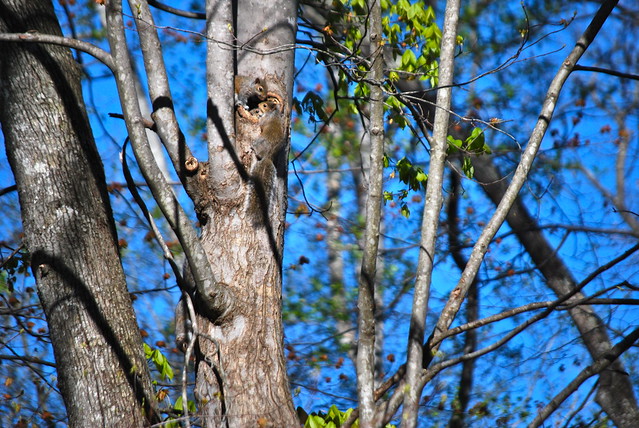
Eye spy three little eyes at a squirrel den.
Soon four squirrels emerged, their shelter discovered. If you ever find a shelter, den, or nest, it's an easy way to continue to observe an animal from a distance.

Later, while hiking a trail, I stumbled upon a piece of a mammal skull.
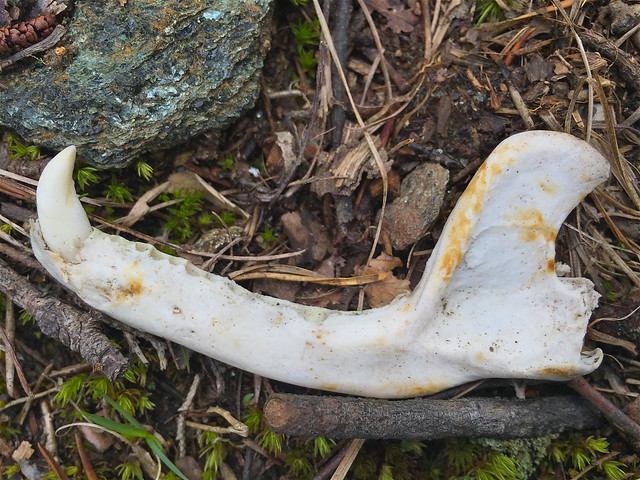
The more deeply rooted canine is the only tooth left on this skull fragment.
After inspecting it for a moment, I took a step and barely caught a glimpse of a black rat snake shoot under a downed log—my first snake sighting of the year. Waiting a moment to see if it would reemerge (it didn't), I saw a northern flicker, the only member of the woodpecker family in Virginia with a very different coat of colors compared to the typical black, white, and red mix.
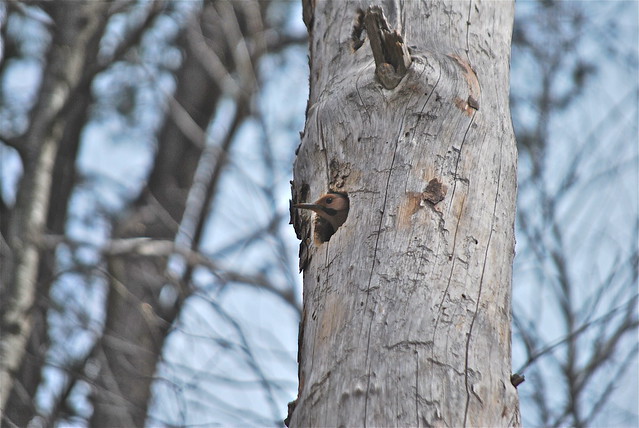
A black 'mustache' next to the beak easily distinguishes the male Northern flicker.
With his head poking out his den cavity, eyeing me with suspicion, I looked for a marker, an unusual rock or tree to remember the area, and left.
Returning the next day, I quietly sat nearby until it flew back home from being out and about.
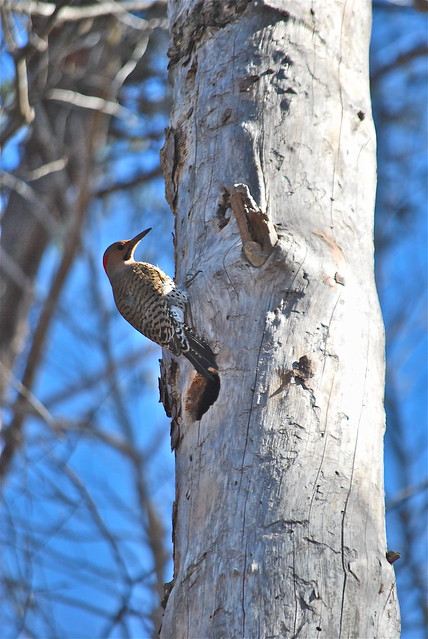
The Northern flicker uses dead trees for hunting grounds as well as a home.
He would stop occasionally and poof out his body, preen his feathers, oiling them, and 'zipping them up' for efficient flight. I also watched and listened to him excavate his cavity, preparing and 'cleaning' his house, so he could impress a female and maybe start a family over the next month. I may return and hope to observe him or his mate feed their potential young.
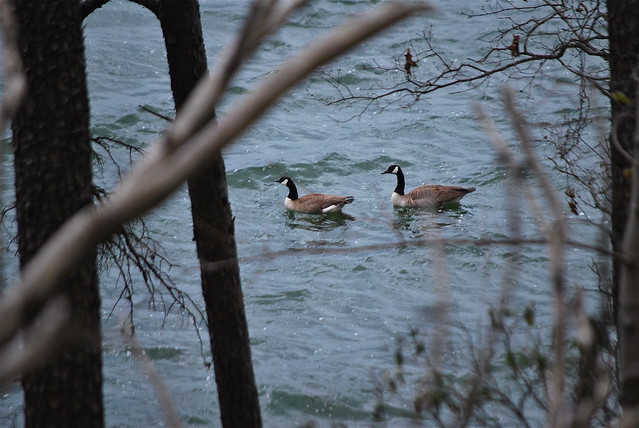
A pair of geese take a swim on the lake.
After getting a look into the habits of a flicker, I was also able to see a pair of geese land on the water and paddle by, as well as an assortment of other birds. All of this because I stopped for a moment to look at a bone.

Pollinators are a welcome sight and sign of warmer weather.
Spring is that time of year to get outside and let nature remind us we can all find contentment in the little things and maybe even be filled with child-like awe at the returning color and biodiverse life of our Commonwealth. We have to unplug, reconnect, and let those little moments present themselves.
Learn more about Smith Mountain Lake State Park. Learn about camping and cabins, or call 800-933-7275 during business hours.
If you have read the article and have a question, please email nancy.heltman@dcr.virginia.gov.
Search for blogs
By Park
Categories
Cabins
Camping
Fishing
History and Culture
Other
Programs and Events
Trails
Volunteers
Water Fun
Archive
2025
2024
2023
2022
2021
2020
2019
2018
2017
2016
2015
2014
2012













